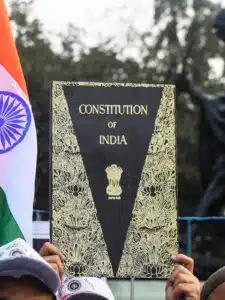
An insight into the meaning of Kidnapping
The word “kidnapping” has not been defined directly in the Indian Penal Code of India. It is a compound word formed from two words, ‘kid’ i.e. child and nap i.e. seize. According to Webster’s Third New International Dictionary, the word kidnapping means the act of stealing, abduction or carrying away a person by force or fraud often with a ransom demand. The offence of kidnapping is but an aggravated form of wrongful confinement and is, therefore, an offence in which all the elements of that offence are necessarily present.
According to section 359 of the Code, kidnapping is of two kinds – kidnapping from India and kidnapping from lawful guardianship.
(1)Kidnapping from India – Section 360 of the Indian Penal Code defines the expression ‘kidnapping from India’ as conveying any person beyond India’s boundaries without taking the permission of that person or from the person who is legally authorised to consent on behalf of that person is known as kid
Essential ingredients of kidnapping
(i) Conveying any person beyond the boundaries of India.
(ii) Such conveying must be without that person’s consent and without the consent of a person legally authorised to consent.
Therefore, it should be noted that if a person kidnapped is above twelve years of age and has given consent to his or her being conveyed beyond the limits of India, no offence is committed.
Also, the consent given by a person of unsound mind or by a person under intoxication is no consent within the law. Similarly, consent given by a person under fear of injury under misconception is no consent for the purpose of the Code where the offender obtaining the consent knew that the consent was given under such fear or misconception.
(2) Kidnapping from the Lawful guardianship- Section 361 of the Indian penal code defines the expression ‘kidnapping from lawful guardianship’ as – whoever takes or entices any minor who is under 16 years of age in case of a male and 18 years of age in case of a female or any person who is not of a sound mind, without taking the permission of such guardian is said to kidnap such person or minor from lawful guardianship.
The words ‘lawful guardian’ in this section includes any person lawfully entrusted with the care custody of such minor or another person.
Exception- this section does not extend to the act of any person who in good faith believes himself to be the father of an illegitimate child, in good faith believes himself to be the lawful guardian of such child unless such an act is committed for an unlawful or immoral purpose.
Illustration- In the case of Chadrakala Menon and another v. Vipin Menon, the couple was living in the USA. They had a child who was living with her maternal grandparents in India. The couple decided to get separated and subsequently Vipin Men 367 – kidnapping to subject a person to grievous hurt
Section 369 – kidnapping a child under 10 years of age to steal from a person.
An overview of abduction-
Section 362 of the Indian Penal Code defines adduction and compelling by force or by deceitful means or inducing any person to go from any place is known as abduction that person. An accused kept a girl in his house by misrepresenting himself as a police constable in the case of Bahadur Ali v King-Emperor for a ransom of Rs 600. The court considered this act as abduction.
Essential ingredients-
- The presence of a force full compulsion or inducement by deceitful means is essential.
- The objective behind such compulsion or inducement must be the going off a person from any place.
- It should be noted that abduction as such by itself is not punishable as a substantive offence. But if it falls within the categories dealt with by sections 364 to 369 except sections 266 A, 366 b and 268 by reason of other additional elements apart from force or fraud, it will be an offence punishable under those sections.
Note: There can be no abduction without the presence of force or inducement by deceitful means in taking a person away.
Types of abduction-
Section 364 – abduction with a motive to murder
Section 365 – abduction to wrongfully confine a person
Section 366 – abduction to marry a woman by compulsion.
Section 367 – abduction to subject a person to grievous hurt
Section 369 – abduction of a child who is under 10years of age to steal from a person.
Punishment- Punishment for sections 364,366 and 367 is imprisonment which may extend to 10years and with fine, sections 365 and 369 provides imprisonment up to 7years with a fine.
Key points of difference between kidnapping and abduction-
- Kidnapping is defined under sections 360 and 361 of the IPC and is punishable under section 363. Abduction is defined in section 362.
- The offence of kidnapping is committed only in respect of minors ( below 16 years of age in case of male and below 18 years of age in case of female and persons of unsound mind ). Abduction can take place against any person of any age.
- Kidnapping is taking away a person out of legal guardianship but abduction is only related to the person who is abducted.
- Kidnapping is simple taking away of the minor but the man used for kidnapping has no reference. In abduction the use of compulsion or deceitful means is essential.
- The consent of the person being kidnapped is in material but in abduction free consent condones abduction.
- In kidnapping, the intention of the kidnapper is not considered but in a fraction, the intent is an important factor.
- Kidnapping is not a continuing offence but completes as soon as the victim is conveyed beyond the limits of India or taken out from the law of guardianship. Abduction is a continuing offence and continues so long as the abducted person is removed from one place to other.
You may also like to read:
-
19 Aug 2021 Know Your LawCitizenship laws in India
-
24 Jul 2021 Know Your LawElection of President and Vice-President
-
16 Aug 2021 Know Your LawThe preamble to the Constitution of India
-
02 Oct 2021 Case BriefsCase Brief on Rupa Ashok Hurra v. Ashok Hurra Writ petition (civil) 509 of 1997
-
09 Sep 2021 Know Your LawCONCEPT OF LEGAL AID IN INDIA
-
12 Sep 2021 Know Your LawConstitution above all








